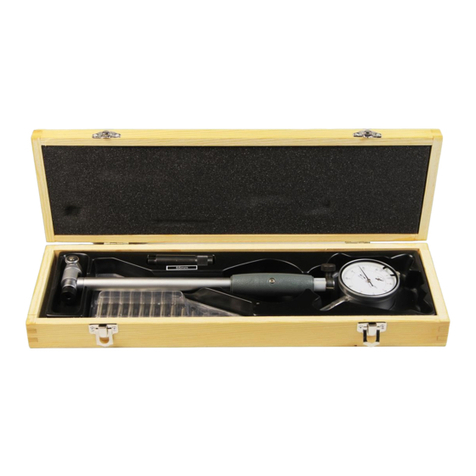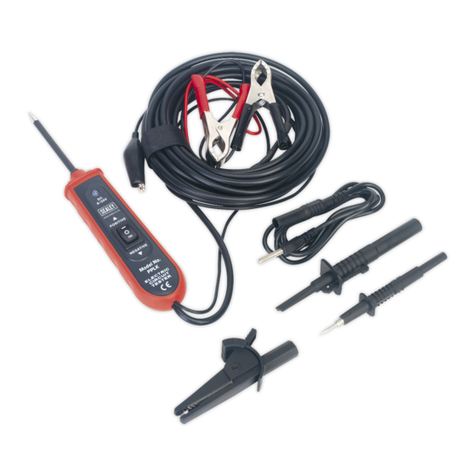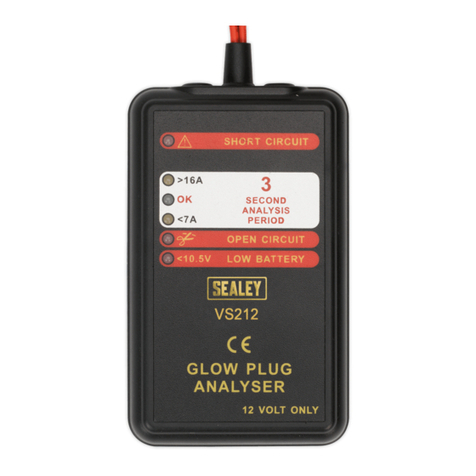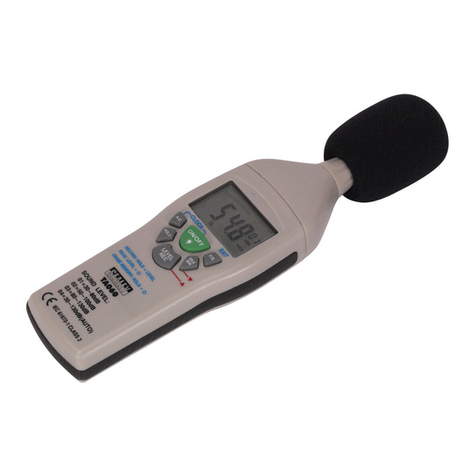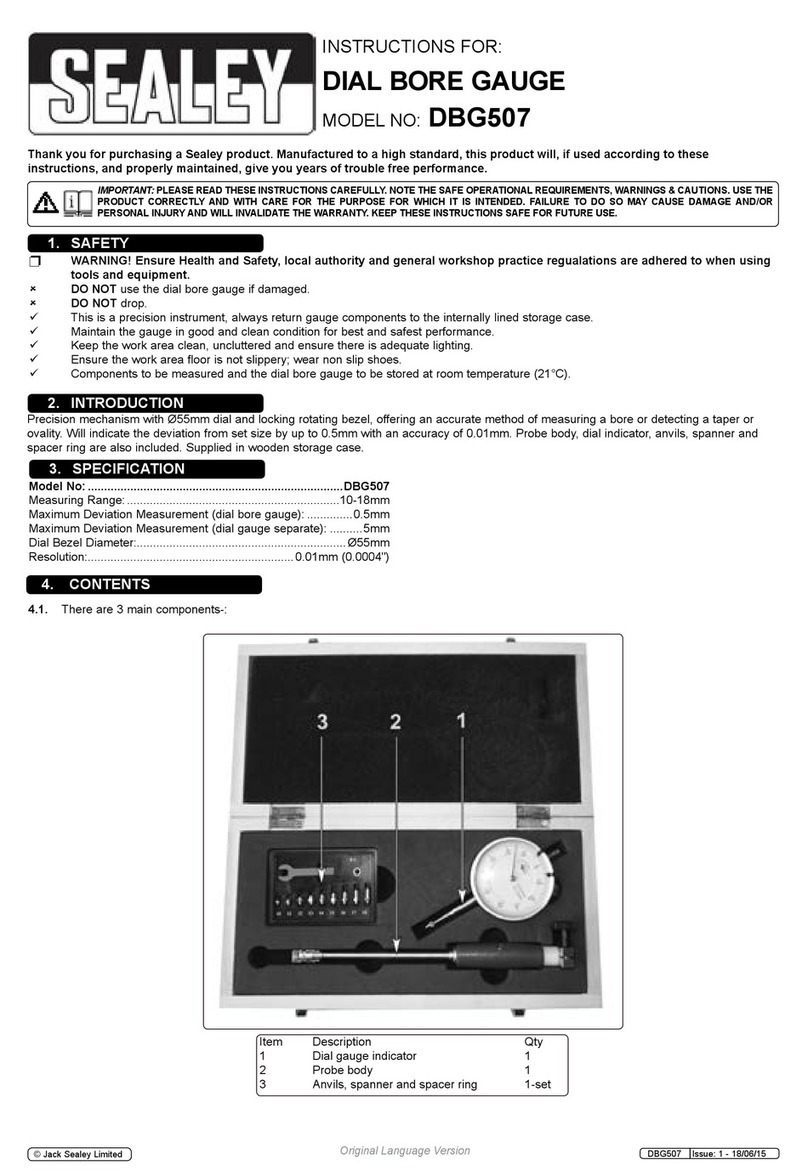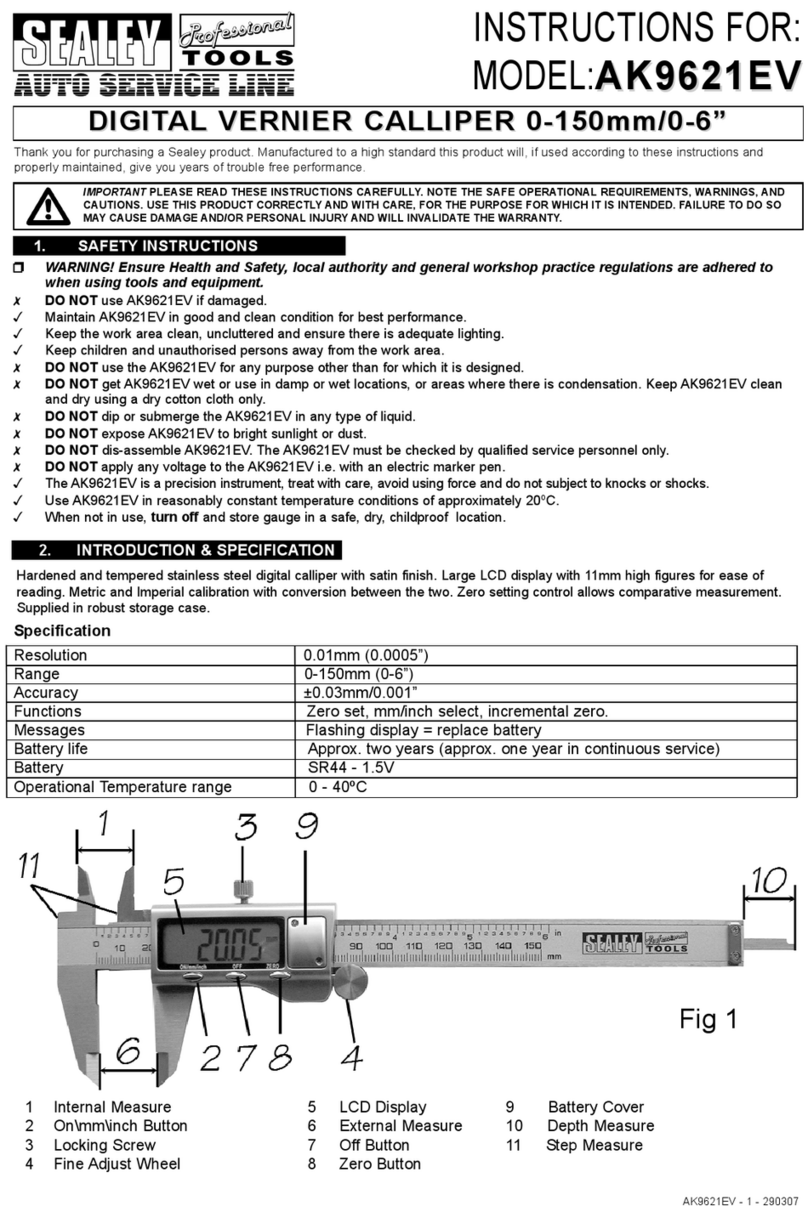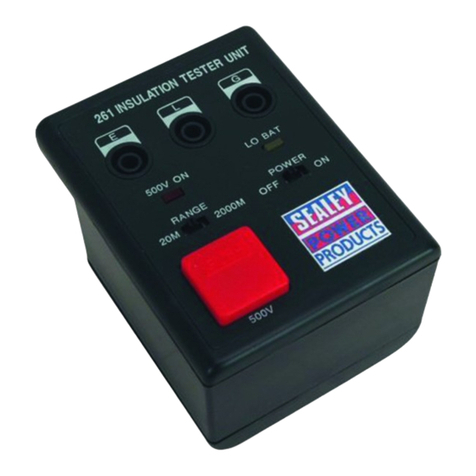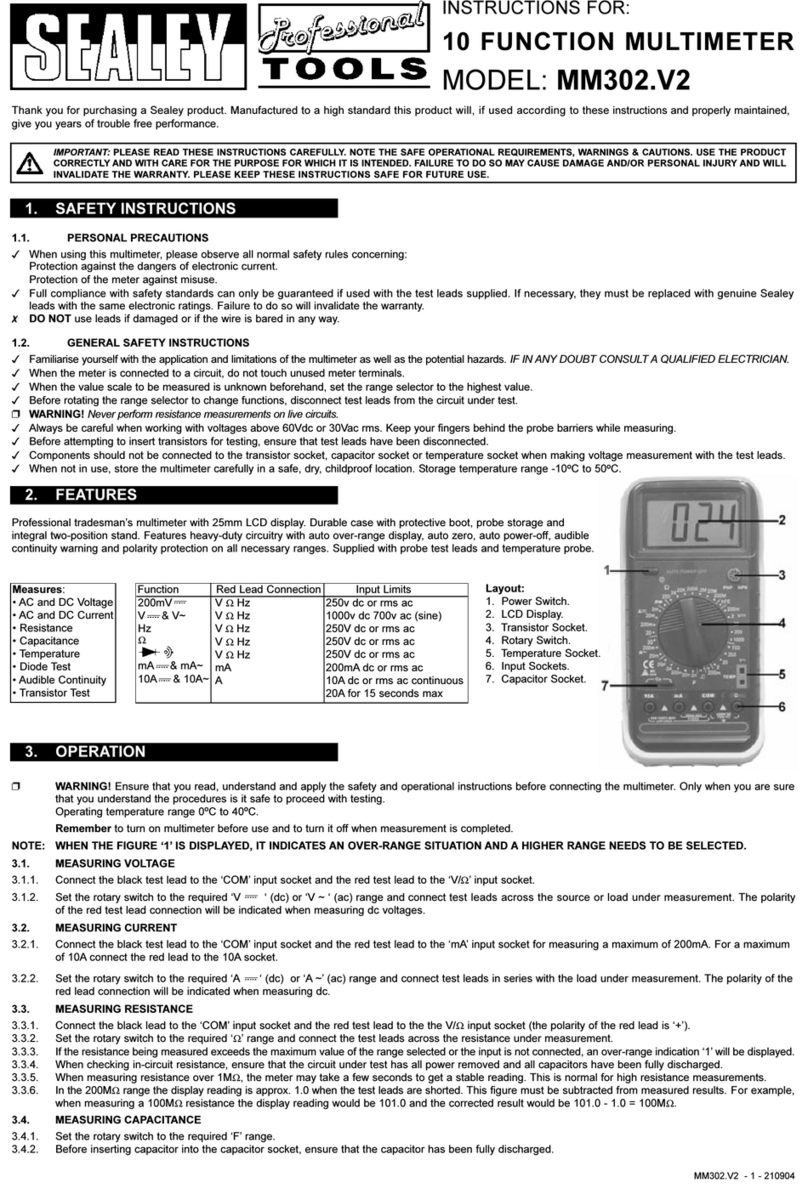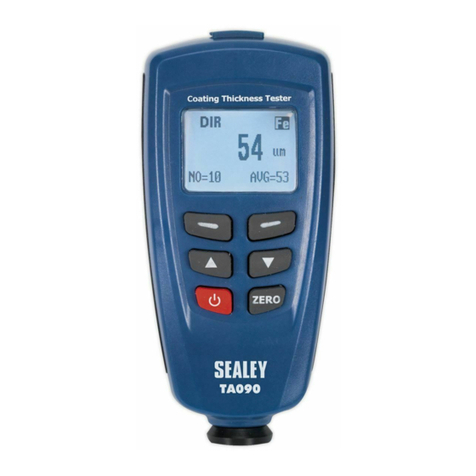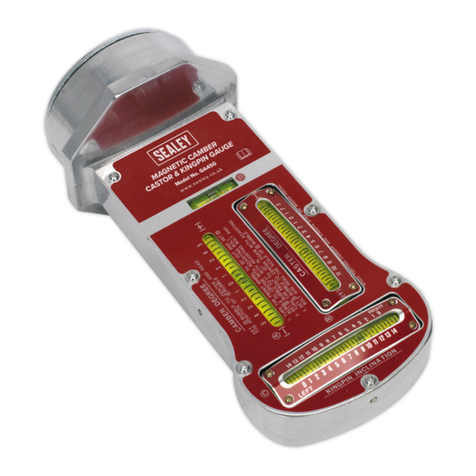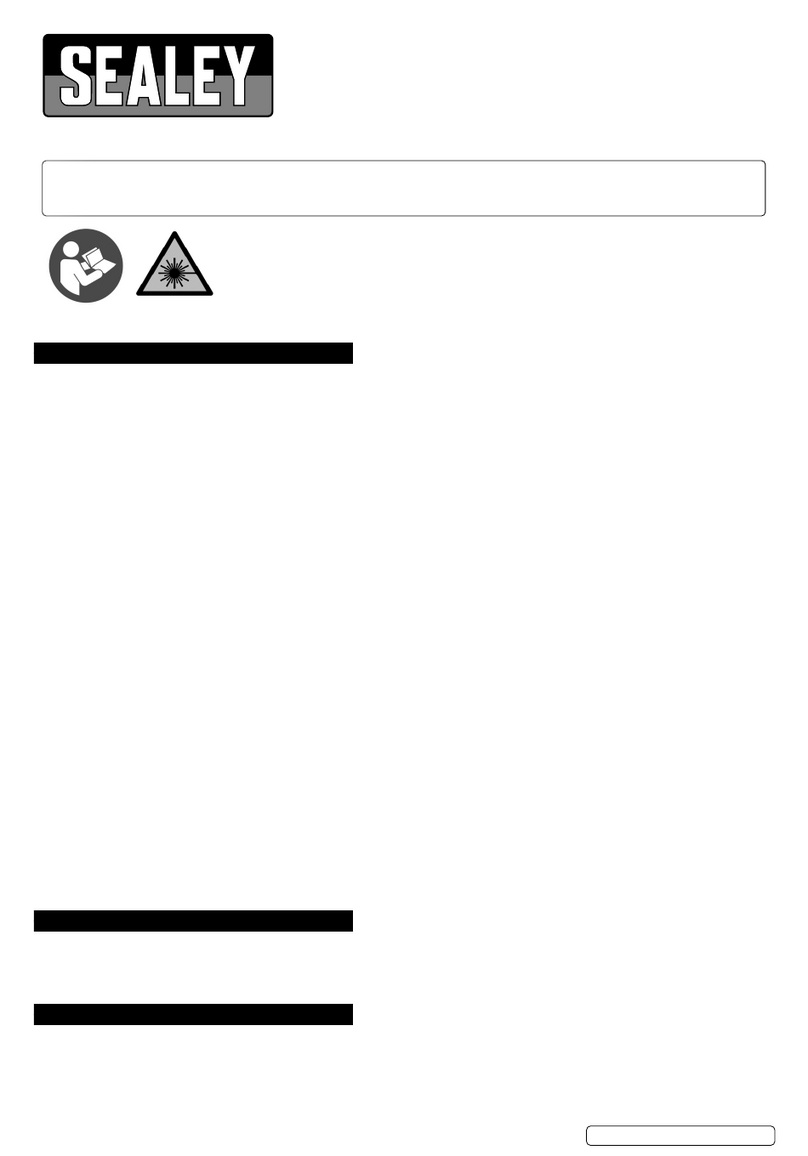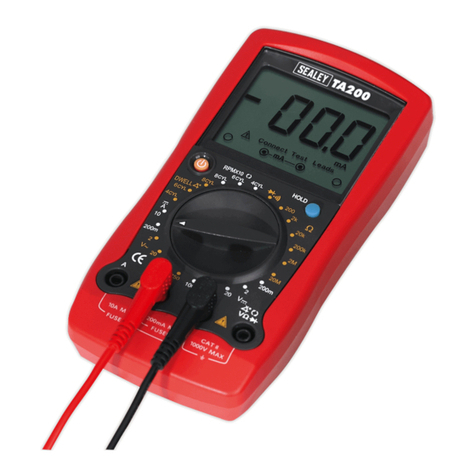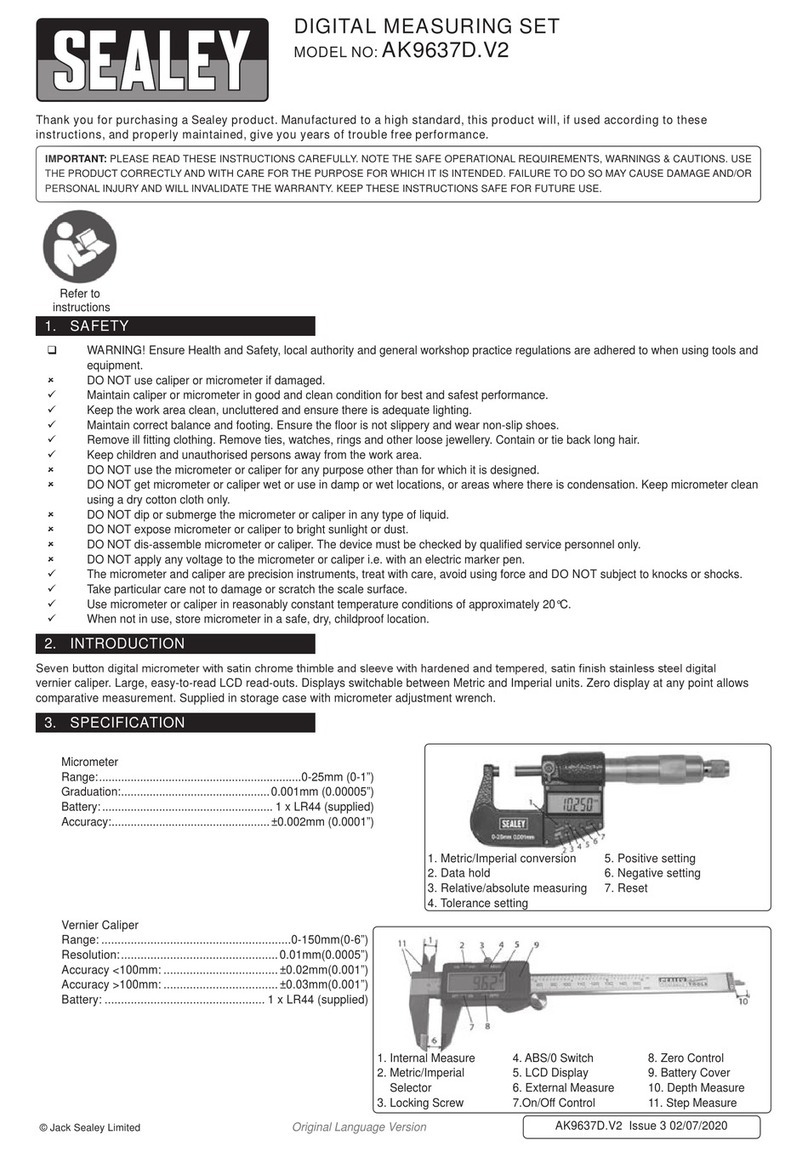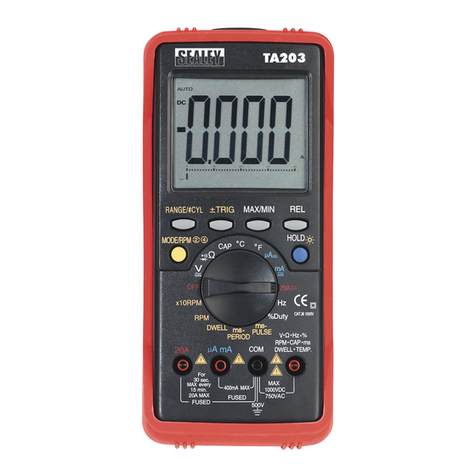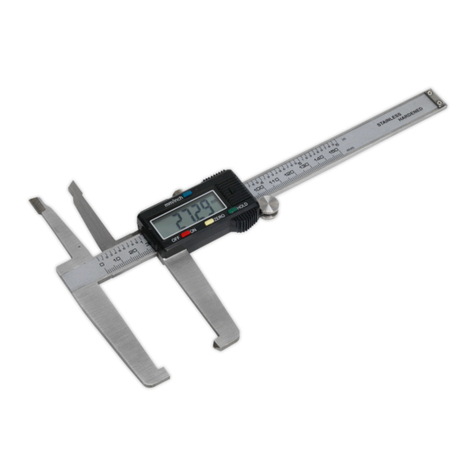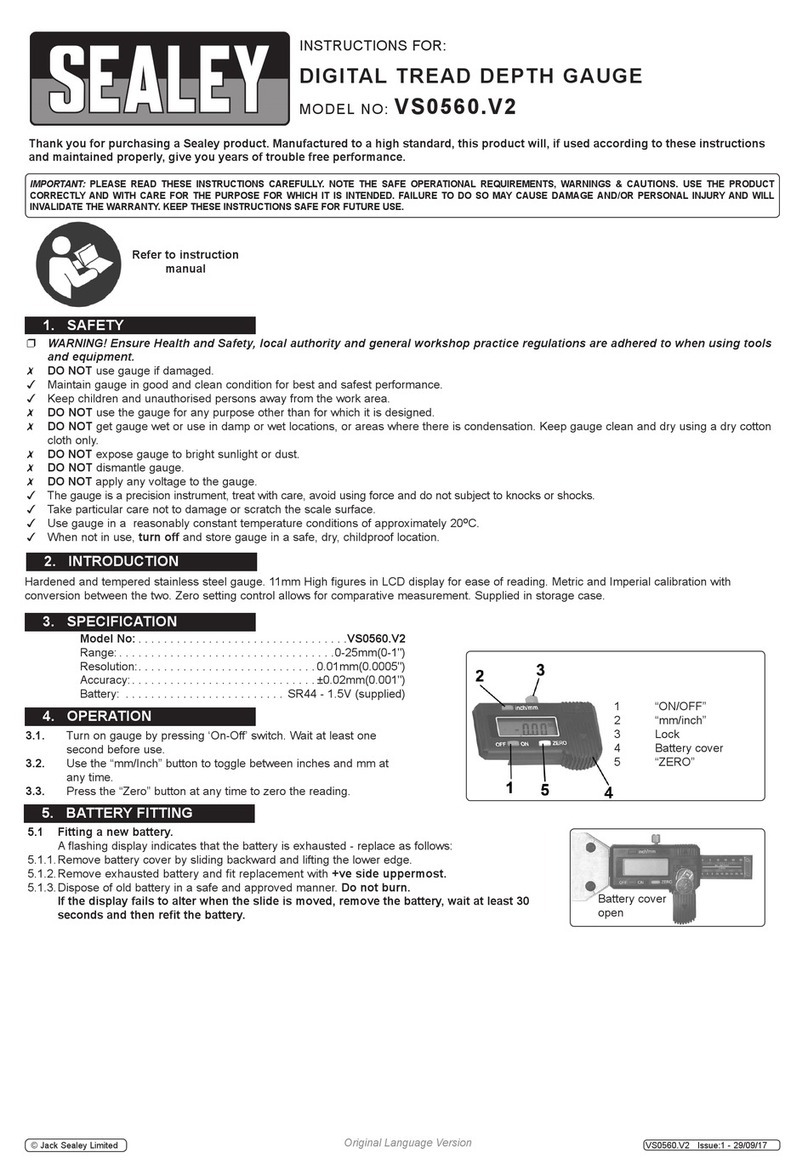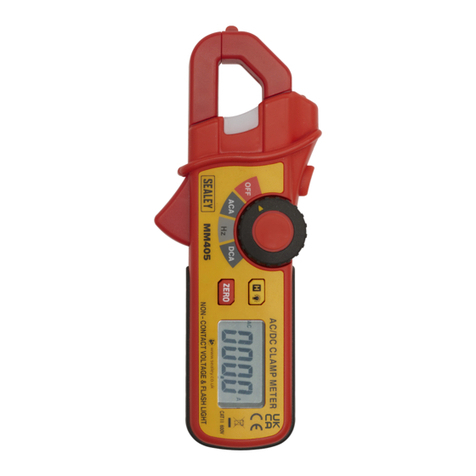
5. OPERATION
5.1. Setting up (The dial ball gauge is a comparator not a measuring tool)
5.1.1. Measure the bore diameter or gap to be measured to the nearest millimetre with a rule or vernier callipers. The bore or gap
must range between 18mm and 34mm nominally with this tool. (Up to 36mm with spacers)
5.1.2. Select the range of parts required, anvils and spacers using the table on the last page.
5.1.3. Assemble the dial bore gauge with selected parts as shown in fig.1 and fig.4. Ensure all components are clean before using the supplied
spanner to fit the required anvil/spacer requirement. DO NOT overtighten.
5.1.4. Insert the dial stylus into the probe body as shown in fig.4. The stylus will meet with resistance internally and the dial pointer will
begin to rotate clockwise. One complete cycle of the pointer is recommended for registration and will be indicated by the secondary dial
indicator annotated 1-5. The small pointer should now be indicating "1" [one].
5.1.5. Clamp the dial stem with the thumb screw. DO NOT overtighten.
5.2. Calibration
5.2.1. Depending upon accuracy requirement, calibration can be achieved with slip gauges, micrometer or vernier callipers. In our instructions
example the micrometer is suggested, which has similar accuracy to the dial gauge.
5.2.2. Set the micrometer (0mm-25mm) to the target size "x", for example Ø23.75 and lock. In our example the tolerance required is H9 from
BS 4500:1969 (+.052/-0).
5.2.3. From instruction 5.1.2 and the tables on the back page; parts required are either the anvil 24 ("x"=23.60-24.40) or anvil 22 plus spacer
ring 1.3 and spacer ring 0.65 ("x"=23.55-24.55), from fig.5. Assemble as shown above in fig.1.
5.2.4. Maneouvre the gauge anvil and nib inside the measuring gap of the micrometer (fig.11). This activity could be eased by assistance or
carefully clamping the dial gauge in a retort stand or similar.
5.2.5. Observe the large dial pointer movement. It is essential that the axis of the gauge anvil and spring loaded nib are centralised in the
micrometer measuring faces. It is essential to observe the total sweep of the dial pointer using the small dial. Remember from the initial
setting the pointer had rotated one full cycle.
5.2.6. When satisfied with alignment, hold the position and rotate the dial bezel until the "0" [zero] aligns with the pointer. Lock the bezel with
the thumb screw. Your dial bore gauge has now been calibrated for use in a Ø23.25 to Ø24.25 bore ie +/-0.25mm of target.
5.2.7. The tolerance band can now be set using the two "markers" on the bezel. Our example states the tolerance band to be +0.052 to -0. Set
one marker opposite and in line with "0" [zero] (fig.6) and the other +5.2 (fig.7) divisions apart. Note! the larger the deflection the smaller
the bore.
Nib
Anvil
see table on last page
Use the spacer rings to achieve "x" = 18.65, 19.30, 19.95:
20.65, 21.30, 21.95 etc..
Insert the stylus for 1 full large pointer revolution
g.4
g.1
Small pointer on "1"
Be aware, nib projection is 1.5 mm. Aim for
0.35mm to 1.15mm as the measurement zone.
DBG508 Issue: 1 - 19/06/15
Original Language Version
© Jack Sealey Limited
Nib
Nib total movement
Measurement zone = 0.8mm
Spacer
rings
Spring return self
centering guide.
(3 point location)
Anvil Bore
g.2
g.3
g.5
g.7
Pass Pass
Fail
Fail Fail
Fail
Lower Limit (+0.00mm) Upper Limit (+0.052mm)
Example only taken from
Calibration text 5.2.
g.5 g.6
Tolerance
markers
